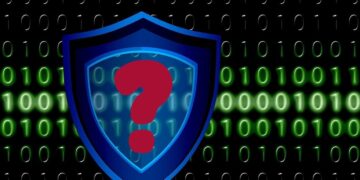“The biggest part of Digital Transformation is changing the way we think”, a quote every industry is currently adapting while undertaking remote working. In regular terminology, transformation is any significant change in form, nature, or appearance. At the moment, if we look around us, we can see transformation evidently; individuals, organizations, and industries have all transformed or transforming, modifying the traditional methodologies to fit into the current landscape.
The onset of COVID-19 has accelerated the path to the cloud. Cloud computing has become the core for most organizations, and in times to come; the post-COVID phase would certainly witness stupendous growth in this area as it is affordable, easy to use, and also highly customizable. The dawn of cloud technology brought us closer and made communication one of the most essential aspects of human life easier and faster.
There would occur a need to digitize every aspect of a business process that will be beneficial in the longer run. In response to the pandemic, companies have also adopted the requirement of efficient team collaboration tools as a way to ensure remote teams can communicate and collaborate. Collaborative solutions are the need of the hour highlighting the paradigm shifts in business operations.
There exists a certain amount of uncertainty that comes along with digitization and it strictly refers to data security. But concerns over security are genuine and enduring. With the rising concerns over data protection and privacy, many enterprises feel uneasy about passing control of their communications infrastructure to a third party. With security breaches and malfunctioning, it is imperative that we are vigilant and, on our toes, to face unknown challenges.
However, communication on different platforms, such as social media and emails, requires a certain level of privacy. Moving our communications onto the Cloud exposes us to the risks of hacking, identity theft, DDoS attacks, malware, and eavesdropping. Time and again leading organizations have made it to the headlines owing to data breach and it becomes immensely important for organizations to choose collaborative solutions carefully enough to not end up as the victim.
Thus evolved the need of end-to-end encryption, a communication system wherein when a user sends an email or a message to someone, no one is monitoring the network or can see the content of the user’s message. Encryption is the basic building block of data security, it doesn’t just stop people accessing user’s data or eavesdropping on conversations it offers protection and ensures a computer system’s information can’t be stolen and read by someone else.
End-to-end encrypted clouds allow one to get a higher level of security for their data, one of the most important ways to ensure data security on any computer or phone. It blocks third parties from accessing the data and saves us from the trouble that can be caused by a malicious hacker.
Most individuals struggle to understand the need of end-to-end encryption, with the advancement in technology we need to acknowledge the fact that nearly half the population is actively using digital spaces to communicate and connect with the global audience. With more and more people gaining access to online communication on various platforms there has been a significant rise of data breaches and cybercrimes across these platforms. End-to-end encryption allows us to continue the conversation without the fear that our private information is being read or secretly modified, other than by the true sender or receiver(s).
Whenever communication occurs on a cloud, they have no ability to see the content. That’s because the encryption and decryption of messages sent occur entirely on the device. Prior to a message leaving the device, it is protected with a cryptographic lock, and only the receiver has the keys to unlock the same. The keys change with every message that’s sent. All of this happens behind the scenes confirming the conversations to be safe and secured.
The pandemic has however changed the scenario of the existing work culture and there has been a major shift towards remote working. Remote working has enabled individuals the comfort to work from home without getting exposed to Covid-19, however, this further reflects to the increase of individuals accessing their home networks for the same. This resurfaces a common dilemma of the users instating chances of interruption/hacking or other malicious attacks. However, having an end-to-end encrypted cloud interface back up allows one to ease out the tension of malicious attacks or data breaches.
The risks of being unable to secure an organization’s data are immense, but properly encrypting corporate information can save $385,000 per breach, according to a recent study. The new generation of secure, easy-to-use, and competitively priced end-to-end encrypted solutions now present in the market are effective tools that can help organizations secure their sensitive data and that of their customers. All this occurs while providing easy access to stakeholders through advanced security features.
End-to-end encryption implements TLS (Transport Layer Security) which is intended to prevent data the messages are encrypted by the sender but the third party should not have the means to decrypt them. Such prevention is possible because plain text messages are encrypted in the form of cipher text and then again decrypted when the recipient is expected to receive it. We can say, encryption is the transformation of data from a readable format into an encoded format that can only be read or processed after it’s been decrypted. End-to-end encryption works on certain encryption algorithms.
The message sent is encrypted with the help of an algorithm; the same can be decoded by using a particular key. This key can be stored on the receiver system and the same can further be transmitted with the data that has been encrypted.
In today’s parlance with the fast-evolving technologies, there is a new challenge every day, but with new challenges there arises a need for newer ideas and solutions. There is an increased dependency on the IT sector to innovate and equip ourselves for what lies ahead. Cloud communications have become one of the most significant aspects today, in areas of technological development in order to devise enterprise-class security protections designed to counter those risks.
Disclaimer: The author of this article is Pramod Sharda, CEO – IceWarp India & Middle East. Views expressed here are his own.























